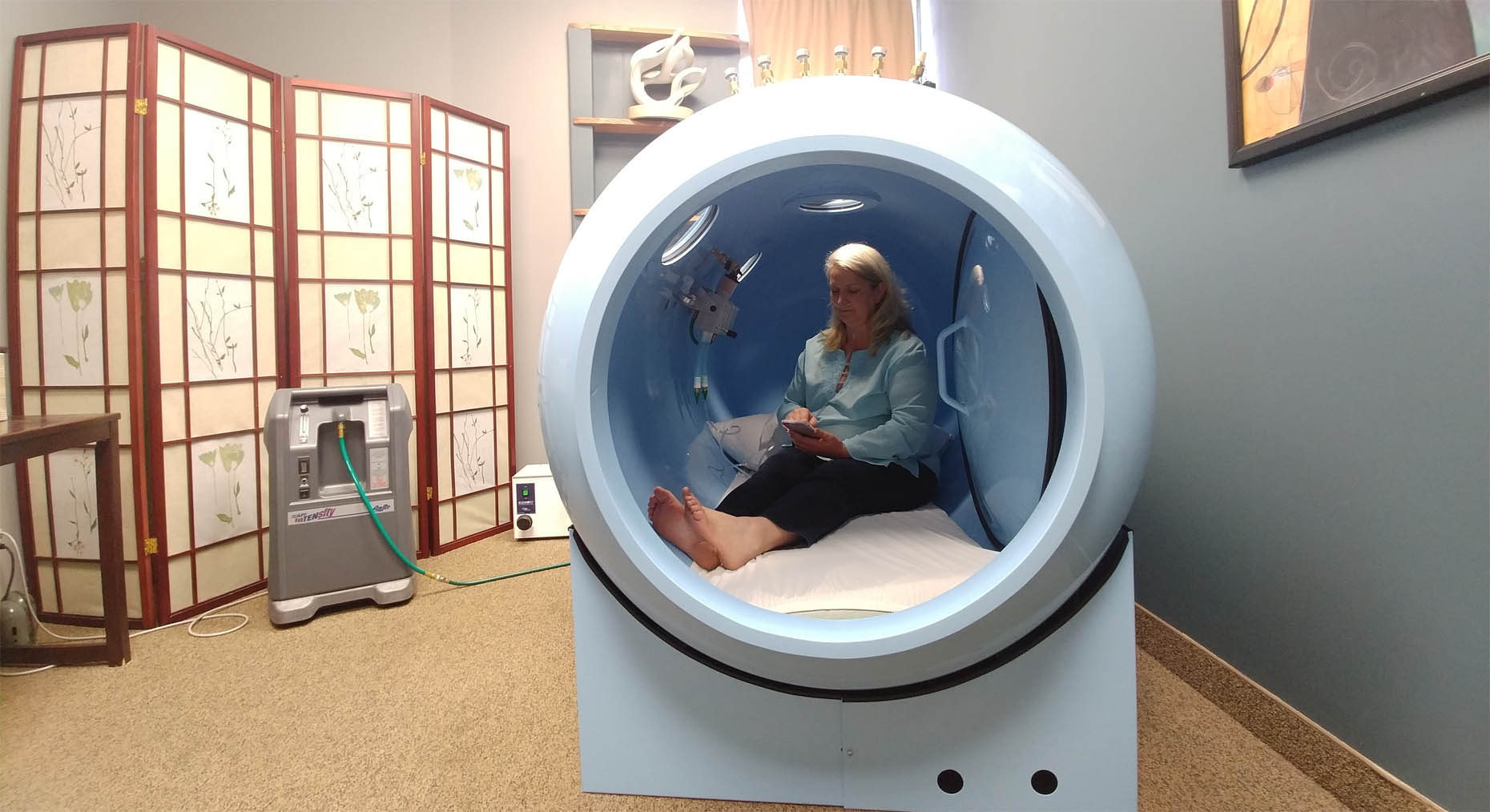How does hyperbaric oxygen therapy work?

Hyperbaric oxygen therapy requires two things to work: increased atmospheric pressure and oxygen.
When you are in an environment of increased atmospheric pressure, like the chamber, your body more readily absorbs the gas—in this case, pure oxygen—you’re breathing. The increased pressure of the chamber compresses the oxygen molecules so they are more easily transferred to the bloodstream in your lungs. In addition, more oxygen in your lungs means more oxygen available for your bloodstream.
Oxygen is also delivered more easily from the bloodstream into other tissues throughout your body, even into places they can’t easily get under normal pressures. Oxygen supplied under pressure is available to be absorbed into all the body’s fluids—plasma, central nervous system fluids, lymph, and even the bone can absorb oxygen and deliver it to areas where circulation is diminished or blocked.
“Starved of oxygen the body will become ill, and if this persists it will die,I doubt if there is an argument about that”
Dr. John Muntz Nutritional Scientist
The increased oxygen feeds your cells, thereby increasing ATP (adenosine triphosphate) production. ATP is the principal method of storing and transferring energy in cells. Increased ATP means increased energy at the cellular level, where you repair damaged tissue and grow new tissue. This leads to reduced inflammation—one of the causes of slowed healing. Increased ATP also increases stem cell production, creating new tissue, and it increases white blood cell production, helping fight infection. Higher oxygen concentrations also lead to a reduction in cytokine production. Cytokines are a family of proteins in the blood that increase inflammation, among other things.
All parts of the body can work to support the healing process. The increased oxygen greatly enhances the ability of white blood cells to kill bacteria, reduces swelling, and allows new blood vessels to grow more rapidly into the affected areas.
Repeated sessions of hyperbaric oxygen therapy create a pattern of increased and decreased (or normal levels) oxygen in the cells. That cycle helps your body grow new blood vessels through tissues that did not have enough blood support (hypoxic tissue). This neovascularization brings new life to diseased and damaged areas of your body.
In summary, your body uses the extra oxygen supplied by hyperbaric therapy to reduce inflammation, increase white blood cells, grow new blood vessels, and grow new, healthy tissue.
Hyperbaric Therapy is so effective the FDA has approved it for all of the following conditions:
- Air or gas embolism
- Carbon monoxide poisoning
- Gas gangrene
- Crush injury
- Decompression sickness
- Arterial insufficiencies
- Intracranial abscess
- Necrotizing soft tissue infections
- Delayed radiation injury
- Osteomyelitis
- Compromised skin grafts and flaps
- Severe anemia
- Thermal burn injury
- Idiopathic sudden sensorineural hearing loss
